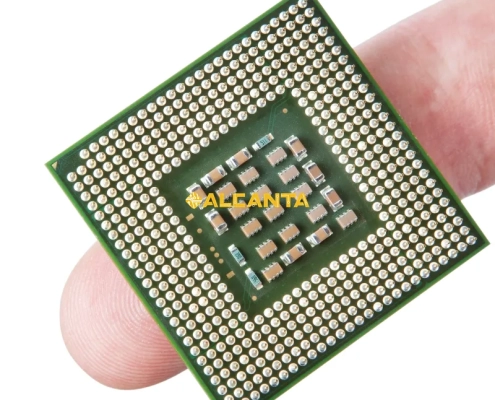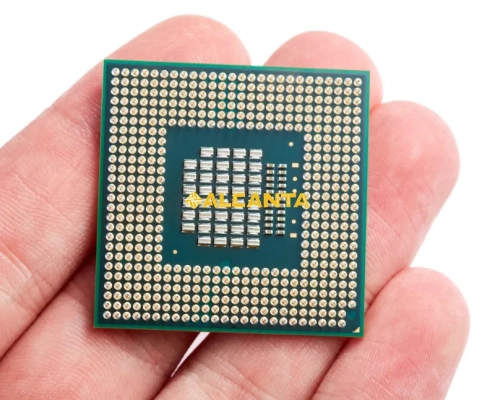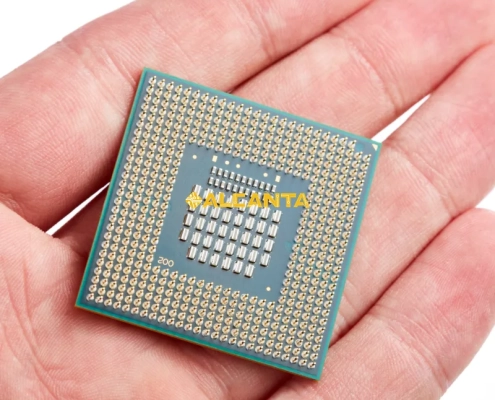PoP Package: Maximizing Semiconductor Efficiency
Package on Package (PoP) technology represents a pivotal advancement in semiconductor packaging, revolutionizing the integration of multiple chips within electronic devices. Its significance lies in its ability to enhance functionality and performance while reducing overall footprint. This article delves into the multifaceted realm of PoP packaging, exploring its diverse applications across industries such as mobile devices, consumer electronics, and telecommunications. By dissecting the intricate components of PoP technology, we aim to provide a comprehensive understanding of its underlying principles and manufacturing processes. Through this exploration, we will elucidate the advantages, challenges, and future prospects associated with PoP packaging. Join us as we embark on a journey to unravel the intricacies of PoP packaging and its profound impact on the semiconductor landscape.
Overview of PoP Packaging Technology
Components of PoP Packaging Technology
Applications of PoP Packaging Technology
Explore the applications of PoP packaging technology in areas such as mobile devices, consumer electronics, and communications
Package on Package (PoP) technology has found widespread applications across various industries, particularly in the realm of mobile devices, consumer electronics, and communications. In mobile devices such as smartphones and tablets, PoP packaging enables the integration of multiple chips within a compact form factor, allowing manufacturers to deliver advanced features and functionalities while maintaining slim and lightweight designs. The use of PoP technology in mobile devices facilitates seamless multitasking, high-speed data processing, and efficient power management, enhancing the overall user experience.
In consumer electronics, PoP packaging technology enables the development of innovative products with enhanced performance and functionality. From gaming consoles and smart TVs to digital cameras and wearables, PoP technology allows manufacturers to incorporate diverse functionalities, such as multimedia processing, wireless connectivity, and sensor integration, into compact and stylish designs. This versatility makes PoP packaging an ideal choice for a wide range of consumer electronics applications, catering to the demands of modern consumers for sleek, feature-rich devices.
In the field of communications, PoP packaging technology plays a critical role in enabling high-speed data transmission, low-latency communication, and seamless connectivity in network infrastructure equipment, such as routers, switches, and base stations. By stacking memory modules on top of processing chips, PoP technology enhances the data processing capabilities of communication devices, enabling faster data throughput and more efficient network management. This makes PoP packaging technology indispensable in supporting the growing demand for bandwidth-intensive applications and services, such as video streaming, online gaming, and cloud computing.
Analyze the role of PoP packaging technology in emerging technologies such as 5G and the Internet of Things (IoT)
PoP packaging technology is poised to play a significant role in driving the adoption and deployment of emerging technologies such as 5G and the Internet of Things (IoT). In the context of 5G networks, PoP packaging enables the integration of advanced processing and memory components within base stations and mobile devices, supporting the high-speed data transmission, low-latency communication, and massive connectivity requirements of 5G technology. By leveraging PoP technology, equipment manufacturers can develop 5G-ready devices and infrastructure solutions that deliver superior performance, reliability, and scalability in demanding network environments.
Similarly, in the realm of the Internet of Things (IoT), PoP packaging technology enables the development of compact and power-efficient devices for diverse IoT applications, such as smart home automation, industrial monitoring, and environmental sensing. By stacking processing and memory chips vertically, PoP technology enables IoT device manufacturers to optimize space utilization, reduce power consumption, and enhance data processing capabilities, thereby enabling seamless integration of IoT devices into existing infrastructure and ecosystems. This paves the way for the widespread adoption of IoT technology and the realization of its transformative potential in various industries and domains.
In conclusion, PoP packaging technology serves as a cornerstone for advancing innovation and driving progress in emerging technologies such as 5G and the Internet of Things. Its versatility, scalability, and efficiency make it a critical enabler for developing next-generation devices and infrastructure solutions that meet the evolving demands of modern consumers and businesses.
Comparison of PoP Packaging Technology with Other Packaging Technologies
Compare PoP packaging technology with System in Package (SiP) technology
Both Package on Package (PoP) and System in Package (SiP) technologies offer advanced methods for integrating multiple chips within a single package, but they differ in their approach and application.
PoP Packaging Technology
- PoP technology involves stacking multiple chips vertically, with each chip serving a specific function.
- It is commonly used in applications where space efficiency and performance optimization are crucial, such as mobile devices and consumer electronics.
- PoP packaging allows for independent testing and replacement of individual chips, enhancing flexibility and repairability.
System in Package (SiP) Technology
- SiP technology integrates multiple chips into a single package through horizontal integration, where chips are placed side by side on a common substrate.
- SiP is ideal for applications requiring heterogeneous integration of diverse components, such as sensors, processors, and memory, in a compact form factor.
- SiP enables tighter integration and higher levels of customization, making it suitable for a wide range of applications, including IoT devices, wearables, and medical electronics.
Contrast PoP packaging technology with traditional Ball Grid Array (BGA) packaging technology, highlighting differences and advantages
PoP Packaging Technology
- PoP technology involves stacking chips vertically using through-silicon vias (TSVs) or wire bonding techniques.
- It offers higher levels of integration and functionality compared to traditional packaging methods.
- PoP enables the integration of diverse components, such as processors and memory, within a compact footprint, optimizing space utilization and enhancing performance.
Ball Grid Array (BGA) Packaging Technology
- BGA technology is a traditional packaging method where the chip is mounted onto a substrate with an array of solder balls beneath it.
- It is commonly used in applications where simplicity and cost-effectiveness are prioritized over high levels of integration and functionality.
- BGA packages have limitations in terms of scalability and customization compared to PoP technology.
While both PoP and SiP technologies offer advanced methods for chip integration, they differ in their approach and application. PoP technology excels in vertical integration for applications requiring high levels of performance and space efficiency, while SiP technology is ideal for horizontal integration of heterogeneous components in a compact form factor. Additionally, PoP technology offers advantages over traditional BGA packaging in terms of integration, functionality, and performance optimization.
Advantages and Challenges of PoP Packaging Technology
FAQs About PoP Package
What is PoP semiconductor?
PoP (Package on Package) semiconductor refers to a packaging technology where multiple semiconductor chips are vertically stacked on top of each other within a single package. This configuration allows for increased integration of functionality within a compact form factor, commonly used in various electronic devices such as smartphones, tablets, and IoT devices.
What is on package memory?
On Package Memory refers to memory modules that are directly integrated onto the packaging substrate of a semiconductor chip. This arrangement enables faster data access and more efficient communication between the memory and the processor, leading to improved system performance and reduced latency. On Package Memory is commonly used in PoP (Package on Package) assemblies to enhance memory capabilities within a single package.
What are the benefits of package on package?
- Increased Integration: PoP technology allows for the integration of multiple chips within a single package, reducing the overall footprint of the device and optimizing space utilization.
- Enhanced Performance: By stacking chips vertically, PoP assemblies can achieve higher levels of integration, leading to improved system performance and efficiency.
- Flexibility and Repairability: PoP assemblies offer flexibility in design and repairability, as individual chips can be tested and replaced without affecting the rest of the assembly.
- Improved Thermal Management: PoP packaging enables efficient thermal dissipation, minimizing the risk of overheating and enhancing the reliability of the device.
- Cost-effectiveness: PoP technology streamlines the manufacturing process by reducing the number of discrete components and simplifying assembly, resulting in cost savings for manufacturers.
What is SiP semiconductor?
SiP (System in Package) semiconductor refers to a packaging technology where multiple semiconductor chips, including processors, memory modules, and other components, are integrated into a single package. Unlike PoP technology, which stacks chips vertically, SiP technology horizontally integrates chips on a common substrate. SiP technology offers advantages such as increased functionality, improved performance, and reduced form factor, making it suitable for a wide range of applications including IoT devices, wearables, and medical electronics.



